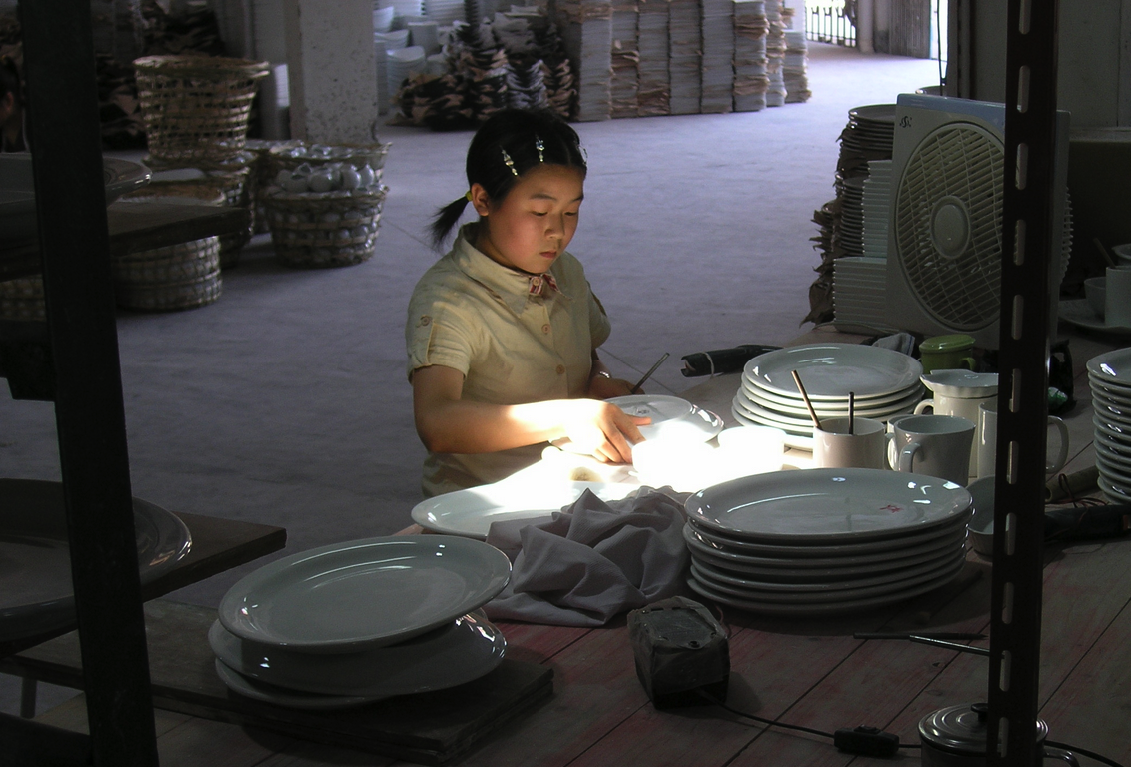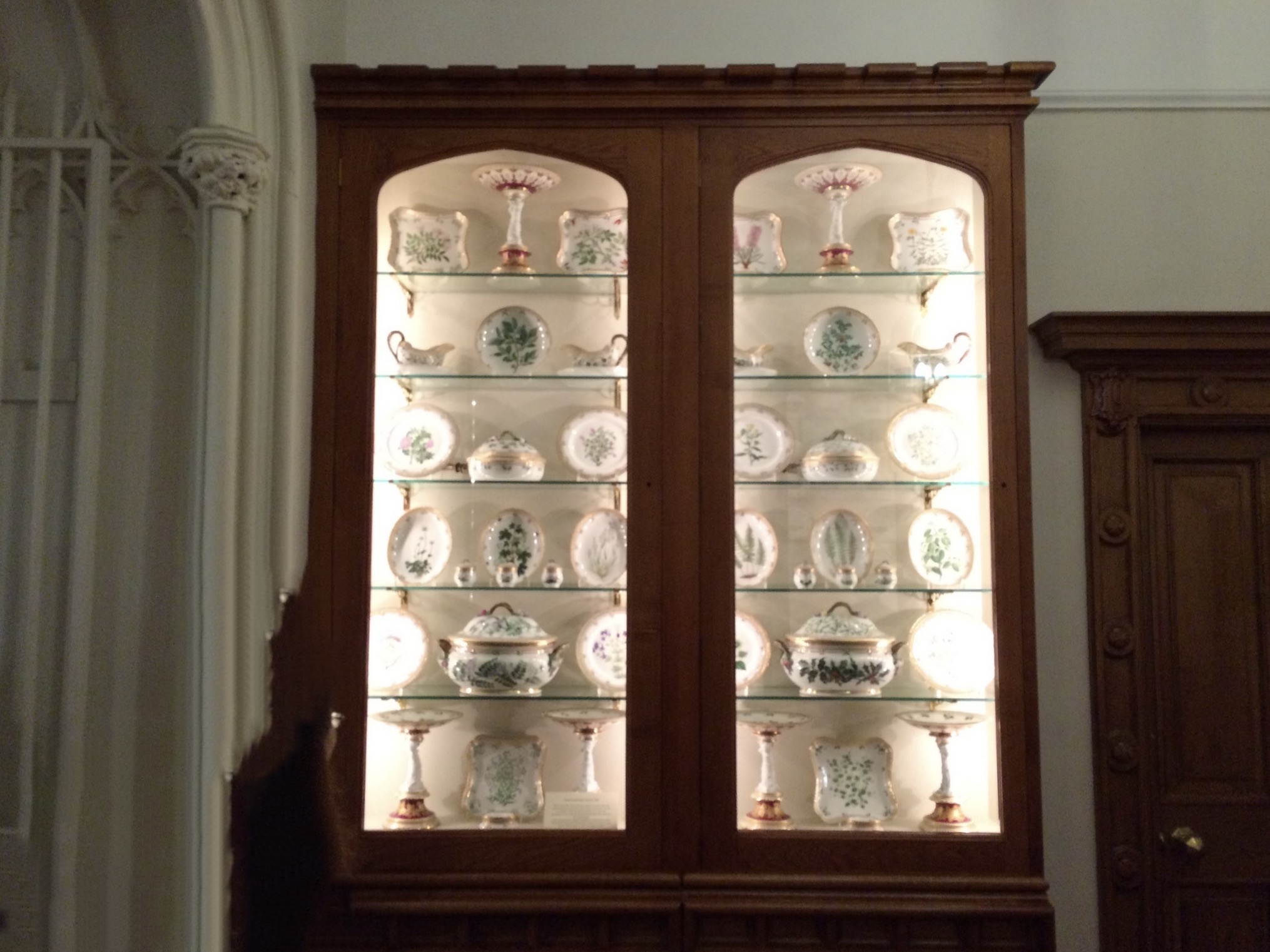Quality Levels
Commercial quality grades of porcelain

The quality classification of porcelain and ceramic tableware is based on sorting criteria. The quality yield of a production batch can only be determined after the hard firing (glost firing) - in the case of decorated porcelain after the decoration firing. No matter whether it is a fully automated mass production or a traditional production by hand, porcelain is subject to a huge number of sources of error during its creation. Only sorting creates the real, flawless quality porcelain. However, the assessment and perception of qualities are very individual and are also interpreted differently.
Most manufacturers use their own quality classes (e.g. I., II., III., and IV. choice), whose comprehensibility is often reserved for "insiders". The decisive factor is whether and how many proportions and in what proportion defective articles are added to the I. choice. You will find the common groupings on this page. Behind the oven door, every porcelain is the same! Whether with, without, with green or blue bottom mark, with coat of arms, ornament, swords or sceptre, they all consist of earthen raw materials and have undergone a hard firing of more than 1,300 °C. The quality of a porcelain tableware is only decided by the sorting. Certainly a rule of thumb can be derived which says that the higher the price, the better the sorting.

But even a visit to the royal tableware exhibition at Windsor Castle (England) shows us that we are better off. Nearly priceless exhibits from the seventeenth and eighteenth centuries prove that quality does not necessarily have to mean high quality. If we were to supply today, for example, in the quality of Fürstenberg's "Brunswick" tableware from 1773 - estimated at around 2.5 million English pounds - every customer would probably be annoyed and would give us a super poor rating.
The more modern the machinery, the better the basic quality output of a so-called "ROK" (run out of the kiln).
I. Wahl / First Choice
An awarded first choice -A-Ware I. Choice- is a porcelain that is absolutely free of any defects. Awarded I. Wahl has to be checked for flawlessness by hand, sometimes with the help of technical and optical equipment. Since in the inspection of goods, deformations, arrangement of snouts and handles, as well as glazes, surfaces, setting rings and shelves must be checked individually, this procedure is extremely expensive and complex.
Depending on brand or product requirements, the inspection of a single item can take a long time, so there are final inspections that can only handle 150 parts or less per man & shift. Since the I. Choice hardly wants to be "paid" by the consumer, the market share of this sorting has been shrinking strongly for years.
In the segment of the hotel porcelain one finds an awarded I. Choice as good as no more, geschweige then the customers, who would pay such a price for it. Therefore, we consider it questionable that some manufacturers limit so-called edge-beating guarantees to the I. choice. A small dot or pinpricks on the glaze have no effect on the density or stability of the body.
Nevertheless, Croatian, Turkish, or Italian factories claim that they only deliver their articles in "first choice"! From our point of view - or according to German criteria - this is somewhat misleading, because the parts themselves are usually thick-walled and rather roughly manufactured. The glazes have small pinholes, the setting rings are not exactly polished and the "shine of the ware" is often not the same as with branded tableware.
By the way, an ancient rule is, "the first choice always pays the second choice"!
Mischsortierung / Handelsübliche Sortierung / Commercial Choice / a-b grade
This is the most common of all assortments in the porcelain industry, especially in the segment of hotel porcelain and restaurant tableware. As the term already expresses, the quality of the goods is "mixed" - so good goods are always accompanied by slightly defective goods! The composition of "good" and "not good" is handled differently from factory to factory. Until today, this term is neither standardized nor 100% traceable.
Just as different are the discounts from the so-called I. Choice for mixed sorting. Rounded, one can say that the price advantage is between 15 and 40%. Many brands no longer produce price lists for their I. Choice, but are designed for mixed sorting from the outset. What is the same for all of them is that the composition of the qualities is mixed, there is a predominant part of "good goods" and a mixture of defective goods. Due to the different production methods of porcelain (turning, pressing, pressure pressing, casting, and die-casting), which depend on the shape of the article, there are also different defects in their degree and perception.
A large, 3-liter tureen is more forgiving of a slight deformation than a plate that is stacked into several pieces. For the majority of all factories, the following applies: mixed sorting is the most efficient sorting in terms of price and a decent quality. In every mixed grading there are defects in the porcelain which must be accepted by the trade and the customer. As a rule of thumb, the percentage of defective goods should not exceed 20% when the goods are inspected closely.
Ofensortierung / run out of the kiln
The easiest to explain sorting: There is none! What the machines and the oven "spit out" is packaged and delivered untested. Although it represents the cheapest quality grade of porcelain - about 25 to 30% discount on the mixed sorting - this is an expensive risk depending on the factory and standard, because the manufacturer is free of any warranty in this selection. The customer has to accept the shipment, no matter to what extent and to what extent it contains defects.
Fehlware / B-Ware / 2. Wahl / II. Qualität
The crockery shows visible, sometimes considerable defects. Mostly glazes are defective, have noses, gradients and iron stains, or the body shows deformations. How significant the respective defect is is up to the viewer.
In view of the low price, however, it is often worthwhile to buy faulty goods, because the defect itself does not usually change the function or the usability of a porcelain article. A plate that is used for "Bierwürstl" at a folk festival does not have to have the quality of manufactured goods!
Spezialsortierungen
Beyond these big three groupings, manufacturers often create very individual designations and communicate them to their customers; for example
- A to F (AF) sorting
- C-quality
- II. to IV. choice
- Faulty goods
- and many more
If you are confronted with such sorting criteria, have them explained to you in detail.
We at Holst Porzellan have an evaluation framework containing 85 criteria with which we define our quality levels.
